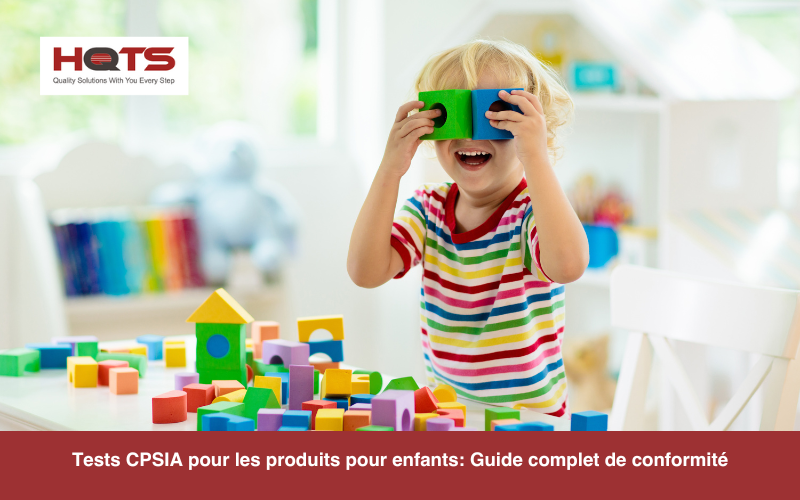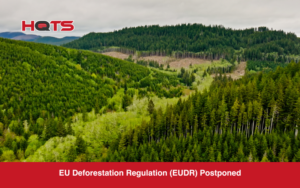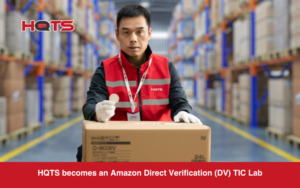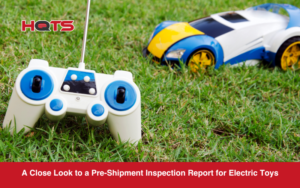The Consumer Product Safety Improvement Act (CPSIA) applies to all products for children 12 and under in the U.S.
When launching children’s products, safety is not just a formality—it’s essential. According to a report by Kids In Danger (KID), in 2022, over 5 million product units were recalled. Many of these recalls were because of issues like lead content violations and some faulty products even caused deaths.
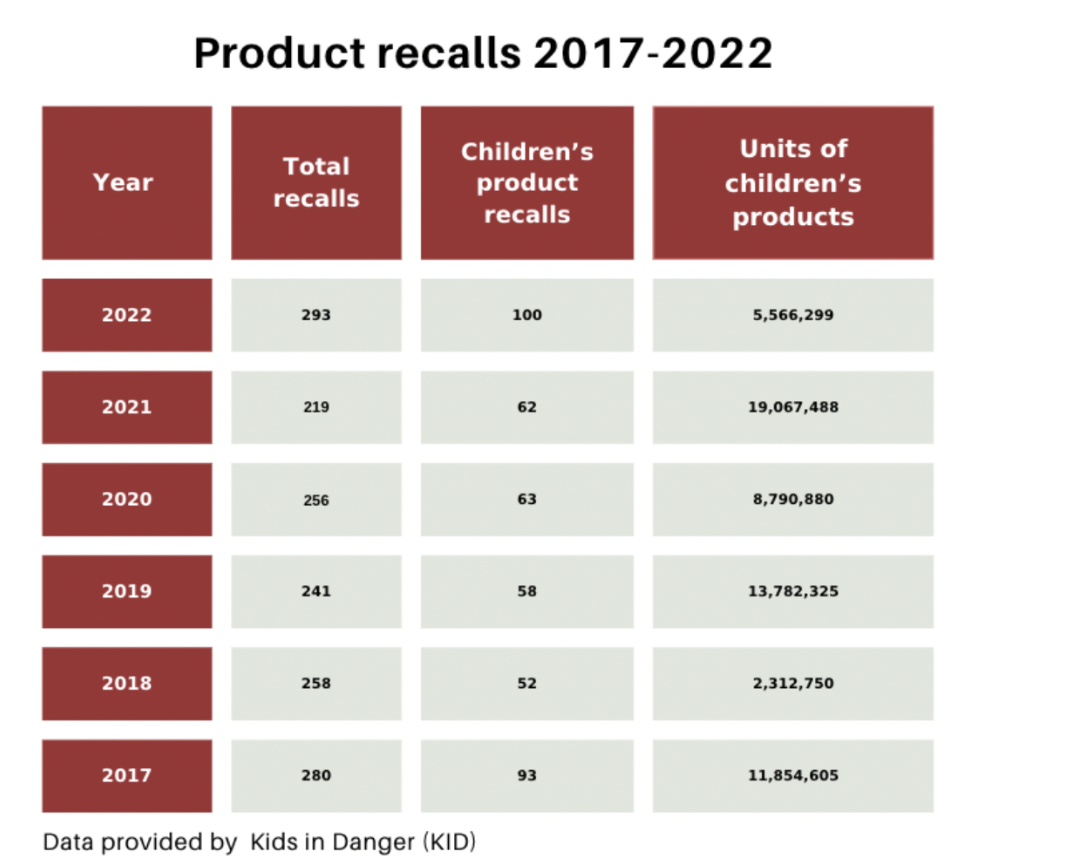
This highlights the importance of ensuring your product meets CPSIA standards. By ensuring compliance from the start, you can avoid costly recalls, protect your customers, and keep your brand’s reputation intact. In this article, we break down CPSIA testing so you can make sure your products are ready for the U.S. market.
First, we’ll explain what CPSIA is and how it regulates children’s products. Then, we’ll walk you through what is needed to be CPSC compliant, and most importantly why it’s essential to partner with a CPSIA-certified lab like HQTS.
What is the Consumer Product Safety Improvement Act (CPSIA)?
The CPSIA was introduced in 2008, by the US congress, to address serious safety concerns in children’s products. Before this law, lead and harmful chemicals were present at much higher levels in items like toys and childcare products.
Previously, regulations were less strict, and testing requirements were minimal. This left retailers and consumers vulnerable to dangerous products entering the marketplace.
The CPSIA changed all that, drastically reducing the amount of lead and phthalates in children’s products. For example, lead limits in surface coatings dropped from 600 ppm to 90 ppm, and phthalates like DEHP and DBP were limited to 0.1%. These changes set a new standard for product safety.
But it didn’t stop at chemicals. CPSIA also ensured third-party testing for all children’s products. This means that every toy or childcare product must now be tested by a CPSC-accredited lab like HQTS in-house laboratories to ensure it meets these stricter safety standards. Once tested, manufacturers or importers must issue a Children’s Product Certificate (CPC), confirming the product is compliant.
What’s more, this certificate must accompany every product shipment and be available to distributors, retailers, and even customs. Before the CPSIA, such third-party testing and certification didn’t exist, leaving more room for non-compliance. Now, products are required to meet much more rigorous standards before they reach the hands of children.
What is the purpose of CPSIA?
So why is CPSIA Important? For sellers, ensuring CPSIA compliance is not just about adhering to regulations—it’s about safeguarding your business from financial loss and reputational damage. The CPSIA is a comprehensive safety regulation for children’s products aimed at consumers 12 years old or younger. The law says that all such products must meet specific safety standards, which cover everything from chemical hazards (like lead and phthalates) to physical risks (like sharp edges or small parts). This means non-compliance can result in serious penalties, including:
- Hefty fines which can devastate small businesses.
- Product recalls damaging your brand’s reputation.
- Bans from sales platforms like Amazon that have strict CPSIA requirements.
- By adhering to safety standards that prevent harmful chemicals, physical hazards, and other risks, you also protect your customers- especially children- from harm.
Which products are covered by CPSIA?
When it comes to selling children’s products in the U.S., you first need to know whether your product falls under the CPSIA. But how do you know if your product is actually considered a “children’s product”? Let’s break it down.
In general, CPSIA defines children’s products based on four key factors. If your product ticks these boxes, you need to comply with CPSIA’s strict safety rules:
- What the manufacturer says: If the label or description says the product is for children, it’s likely subject to CPSIA rules.
- How It’s marketed: Is the product promoted as something children would use? If it’s shown with playful, child-friendly designs, that’s a strong indicator.
- What people think: Would most people recognize it as a product for kids? If so, it’s considered a children’s product.
- Who uses it: If kids commonly use the product, even if it wasn’t exclusively designed for them, it falls under CPSIA.
List of Products covered by CPSIA

CPSIA covers a wide range of children’s products and to be successful, you need to know what products need CPSIA. Some CPSIA product examples include:
- Toys: Everything from action figures to building sets.
- Jewelry: Kids’ necklaces, bracelets, and more.
- Art materials: Paints, markers, and craft supplies designed for young creators.
- Books: Children’s storybooks, especially interactive ones with textures or pop-ups.
- Furniture: Items like infant tubs, bath seats, and even small bean bag chairs with fun designs.
These products must meet safety standards to ensure they’re safe for children to use. It’s all about protecting kids and giving parents peace of mind.
For example, if you’re selling baby blankets, CPSIA ensures they don’t have a loose weave that could pose a strangulation risk. If you’re in the furniture business, you need to know about new stability requirements to prevent tip-overs, keeping dressers and wardrobes safe for toddlers.
How to ensure your products are CPSIA compliant
Getting your children’s products CPSIA-compliant is crucial if you’re targeting the U.S. This involves understanding CPSIA requirements, establishing internal policies for tracking compliance, and ensuring products are tested by CPSIA-approved labs. Both manufacturers and retailers must also keep accurate and updated compliance records to provide in case of audits or investigations.
To comply with CPSIA, your products must adhere to several key regulations that cover everything from chemicals to mechanical performance. Here’s a quick overview of some areas that may apply to your product depending on the type:
- Heavy metals and chemicals: This includes testing for harmful substances like lead, cadmium, and phthalates, which are banned at unsafe levels.
- Small parts bans: Products for younger children need to be free of small, detachable parts that could pose choking dangers.
- Mechanical performance: Does your product have small parts that could pose a choking hazard? CPSIA sets strict rules to prevent such risks.
- Flammability: Products like clothing or soft toys must pass flammability tests to ensure they won’t catch fire easily.
1. Use a CPSIA Third party lab testing
Most children’s products require CPSIA compliance testing by a CPSIA-certified third-party laboratory, like HQTS. These tests include initial third-party testing, material change testing, and periodic testing. HQTS offers CPSIA compliance testing, providing thorough, CPSIA testing that guarantees your product meets U.S. safety standards.

Here’s what you can expect during the testing process:
- Safety tests: These labs will conduct tests to check for flammability, hazardous substances (like lead and phthalates), stuffing material cleanliness, and even battery safety if applicable.
- ASTM F963 testing: This is a crucial standard for most products, especially for toys, ensuring that your product meets mechanical and material safety standards. However if other ASTM standards apply, A CPSIA-approved third-party laboratory like HQTS, can confirm which ASTM standards you need to follow.
It’s important to note that testing should be completed before shipment and importers should avoid relying on suppliers for testing, as incorrect or unapproved testing can lead to non-compliance.
Once your product passes all the required tests, you’ll receive a Children’s Product Certificate (CPC) or a General Certificate of Conformity (GCC). This certificate proves that your product complies with all relevant safety standards.
2. Get your Children’s Product Certificate (CPC)
If you’re planning to import or manufacture children’s products for the U.S. market, getting a Children’s Product Certificate (CPC) is a crucial step in ensuring your products meet safety standards. The CPC verifies that your products comply with the Consumer Product Safety Improvement Act (CPSIA), safeguarding children’s well-being.
Obtaining a CPC involves several key steps, including product testing by CPSC-approved third-party labs and compiling thorough documentation to prove compliance with safety regulations. This process ensures that your product is safe and ready for sale in the U.S., both through physical retailers and platforms like Amazon, where CPCs are mandatory.
To dive deeper into the steps required to obtain a CPC, check out this guide on how to obtain a Children’s Product Certificate
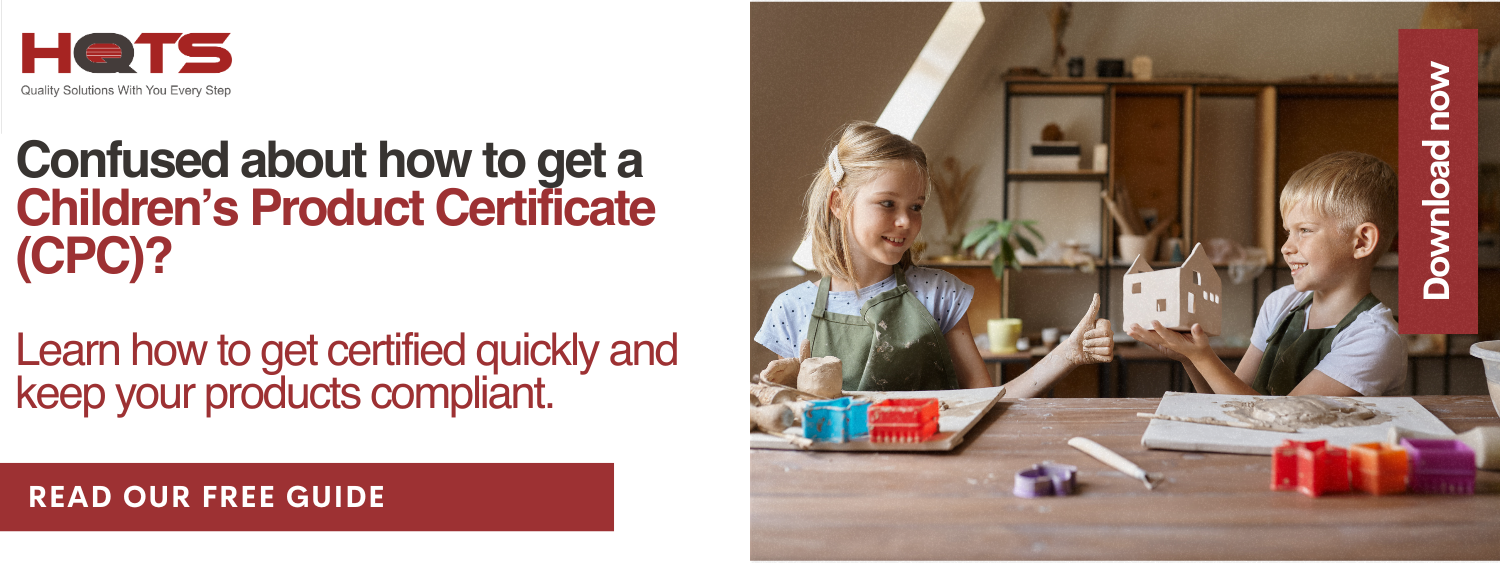
3. Pay attention to the CPSIA Warning
The CPSIA warning is a crucial label that helps consumers understand potential risks with the product, and whether a product requires one depends on the type and the age group it’s intended for.
For instance, if the product contains small parts or is small in size, and is designed for children between the ages of three and six, a warning label is mandatory. This label is crucial for alerting buyers not to give the product to children under the age of three, helping to prevent choking hazards and ensuring the product is used safely by the appropriate age group.
4. Comply with the CPSIA label tracking requirements
If you’re selling children’s products in the U.S., the CPSIA tracking label is mandatory. This permanent label includes important details such as the product’s manufacturer, batch number, and production date, allowing for quick identification if any safety issues arise. The label must be affixed to both the product and its packaging, ensuring that it can withstand wear and tear over time.
Even if the product is part of a set, every item within that set must have its own label. Failing to comply can result in product recalls or removal from platforms like Amazon.
To dive deeper into the steps required to comply with CPSIA label, check out this comprehensive CPSIA Label Tracking requirements guide

The risk of importing CPSIA non-compliant products
Selling non-compliant products can have serious repercussions for your business. The Consumer Product Safety Commission (CPSC) may conduct inspections at your business and if any issues are found, your product could be flagged and reported on public databases, damaging your reputation.
In addition, non-compliant products may be subject to recalls if they pose safety hazards, such as choking or burn risks, which can be costly and disrupt your business. You might also face legal action, as affected consumers could file civil lawsuits. Beyond that, the CPSC can impose civil or criminal penalties for failing to meet safety standards.
To avoid these outcomes, it’s essential to comply with all regulations listed above. If any defects or injuries are reported, manufacturers and importers must promptly inform the CPSC to prevent further complications and minimize risks.
HQTS Third Party CPSIA testing lab and compliance services
So when you’re getting ready to introduce your children’s product to the U.S. market, you’re probably now thinking about what matters most: making sure your creation is safe, trusted, and compliant with all regulations.
But unfortunately, not all testing labs are created equal. Some might be cheaper, but are they really thorough? Are they certified? If they’re not, you risk huge fines, and your reputation. Moreover, If that lab isn’t CPSIA-approved, their results are meaningless. Amazon won’t accept them, customs won’t approve your shipment, and you’ll end up spending more time and money fixing these issues later.
Ensuring CPSIA Compliance with HQTS
At HQTS, we make CPSIA compliance simple. Not sure if your product complies with CPSIA? Confused about testing requirements, labeling, or warning marks? Worried about customs detaining your shipment? Our dedicated compliance team is here to make sure your product meets every standard, so you can ship with confidence and avoid costly delays.
HQTS CPSIA approved testing Lab Services
Our in-house labs conduct detailed testing, checking everything from chemical safety to flammability to ensure your product meets U.S. safety standards. Each batch and product variation undergoes thorough third-party testing to meet the required safety regulations and comply with tracking label rules. This gives you confidence and eliminates the stress of wondering if your product is compliant.
With HQTS, your product will be safe, compliant, and ready for the U.S. market—so you can focus on growing your business without worry. Let us handle the testing, so you can rest easy knowing your product is in good hands. Ready to ensure your products meet U.S. safety standards? Contact our CPSIA testing expert today.
